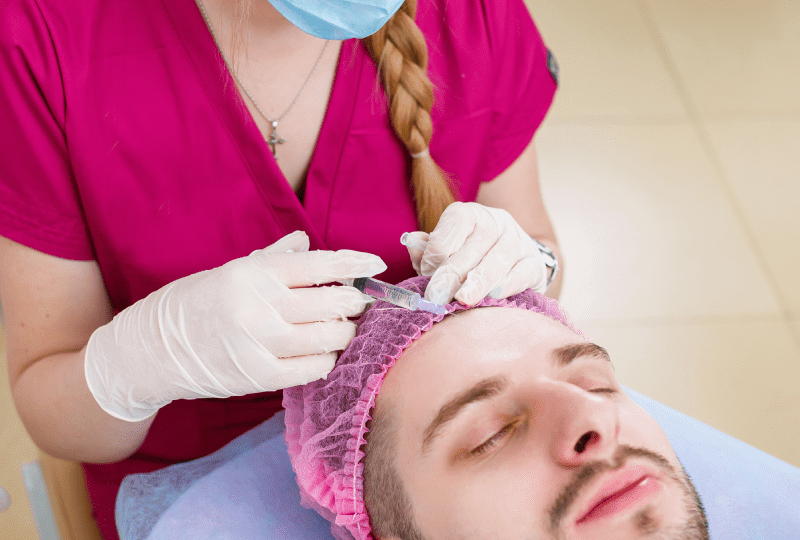What Does A Failed Hair Transplant Mean?
A failed hair transplant does not just mean that the grafts have not taken root at the expected rate; it also encompasses technical errors that lead to an unnatural appearance. For example, a fake-looking hairline that is too straight, too low, or too high, a “pluggy” appearance resulting from grafts being implanted at the wrong angle, or visible sparseness caused by over-harvesting the donor area are all considered failures. Achieving a result far below the desired density also causes great disappointment. In summary, any outcome that fails to meet the patient’s aesthetic and functional expectations is a situation that requires specialist correction.
How Is It Determined That The Hair Transplant Result Was Unsuccessful?
There are multiple ways to determine that a hair transplant outcome is unsatisfactory. The most apparent signs include failing to achieve the expected density even 12 to 18 months after the transplant, the direction of the transplanted hair being wrong in a way that disrupts the natural look, or clearly visible scars and sparseness in the donor area. Furthermore, artificiality such as the hairline not complying with symmetry or aesthetic rules (e.g., corners that are too sharp or a line that is too straight) indicates failure. In the early stages, complications like prolonged healing or severe infection may also signal a serious problem, and a specialist should be consulted immediately.
What Are The Most Common Causes Of A Failed Transplant?
The most common reasons behind a failed transplant typically stem from technical errors and lack of experience. The most frequent of these include: grafts being implanted at an inappropriate angle (leading to unnatural direction), grafts losing their viability after being kept outside the body for too long, and damaging the donor area through excessive graft harvesting. Additionally, insufficient sterilization or failure to provide correct post-operative care instructions can lead to complications such as infection, causing the outcome to be unsuccessful. Expertise and meticulous attention are absolutely essential for this procedure.
What Does A Poorly Designed Hairline Look Like?
A poorly designed hairline has an artificial and noticeable appearance that does not suit the person’s facial features and age. It is often asymmetrical, forming a very straight line, or positioned much too low or too high than expected. Such faulty designs become more prominent as the transplanted hair grows and can give the impression of a “wig,” especially by creating unnatural density in the frontal area. A good hairline should have a soft transition where single grafts are placed along the front border.
What Could Be The Reasons For A Low Graft Survival Rate?
A low graft survival rate can have multiple causes and is the most common indicator of failure. The most fundamental reasons include grafts staying outside the body for too long (longer than 4-6 hours) and the failure to use a proper storage solution during this period. Furthermore, insufficient blood flow in the recipient area before the transplant, the patient failing to adhere to post-operative care instructions (smoking/alcohol consumption), or the grafts being dislodged due to trauma are critical factors that reduce the survival rate. Specialists must store the grafts at the correct temperature and in nourishing solutions to prevent the loss of viability.
How Is The Risk Of Infection After Hair Transplantation Determined?
The risk of infection after hair transplantation arises due to failure to comply with sterilization rules during the procedure and inadequacies in hygienic care after the operation. Symptoms generally manifest as severe and persistent redness, increased pain, swelling, and the presence of pus or discharge from the transplanted area. Fever may rarely accompany these symptoms. To prevent infection, the antibiotics prescribed by the specialist must be taken regularly, and the initial washing instructions must be strictly followed. If such symptoms are noticed, a specialist should be consulted without delay.
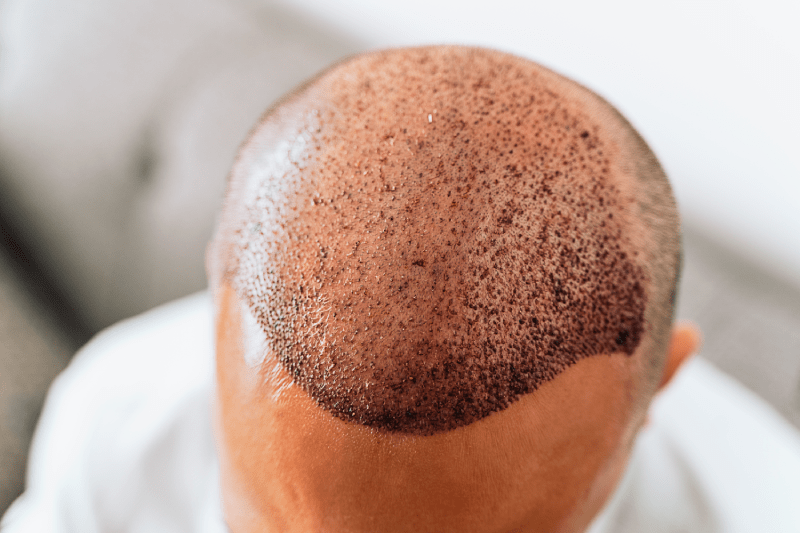
What Kind Of Problems Does Incorrect Channel Angulation Cause?
Incorrect channel angulation is one of the most serious aesthetic errors encountered in hair transplantation and directly leads to an unnatural appearance. Hair should always grow out of the skin at a certain angle and direction. If the channels are not opened according to this natural direction, the transplanted hairs grow straight up, scattered, or in the wrong direction, creating an artificial, “pluggy” or brush-like appearance. This also makes styling and combing the hair difficult and can unfortunately only be corrected with a new revision transplant.
What Does Over-Harvesting The Donor Area Mean?
Over-harvesting the donor area is the removal of too many grafts from the back or sides of the head. This usually occurs to meet the patient’s high-density expectations or as a result of inexperience. Exceeding the donor area’s capacity leaves permanent and noticeable sparseness (a “moth-eaten” look) and widened scars in this area. An over-damaged donor area can be difficult to recover and carries the risk of running out of graft sources for potential future sessions. This is a major error that also complicates revision surgeries.
What Are The Risks Of FUE Scarring?
Although the FUE technique does not leave a linear scar, there is a risk of scarring if incorrectly sized micro punch tools (1.0 mm and above) are used, if harvesting is done too deeply, or if the donor area is used too frequently. These scars typically appear as white, round dots and become noticeable when the hair is cut short (e.g., grade 1). Successful FUE requires using thin punches with a 0.6-0.8 mm diameter to make the scars virtually invisible. Scalp Micropigmentation (SMP) can be applied to mitigate the appearance of scars.
When Should I Try To Correct A Failed Transplant?
You must wait patiently before attempting to correct a failed transplant. At least 12 months, and ideally 18 months, must pass after the transplant to see the full final result. The graft survival and growth cycle takes time, and a hasty correction before this period can worsen the situation. It is also essential that the donor area has rested and healed sufficiently for the revision procedure. This waiting period is critical for both the existing result to settle and for the donor area to recover.
Is Hair Transplant Revision Possible?
Yes, revision hair transplantation is generally possible and can yield successful results. However, this procedure is a more complex and challenging surgical process than the initial transplant. Revision typically involves steps such as redesigning the unnatural hairline, filling existing sparse areas, removing and re-implanting grafts placed at the wrong angle, or camouflaging scars in the donor area. Such detailed corrections require high experience and an artistic perspective. Therefore, consulting a specialized center for revision will increase the chances of success.
Why Is The Revision Procedure More Difficult Than The Initial Transplant?
The revision procedure is much more difficult and complex than the initial transplant because the surgeon has to work in an area that is already damaged, scarred, and has developed scar tissue. Scar tissue in the recipient area can reduce the survival and nourishment rate of new grafts. Additionally, since the donor area was used in the first operation, the remaining graft reserve is limited, and this limited resource must be used very carefully for both correction and a natural appearance. A successful revision requires not only technical skill but also aesthetic intuition and problem-solving ability.
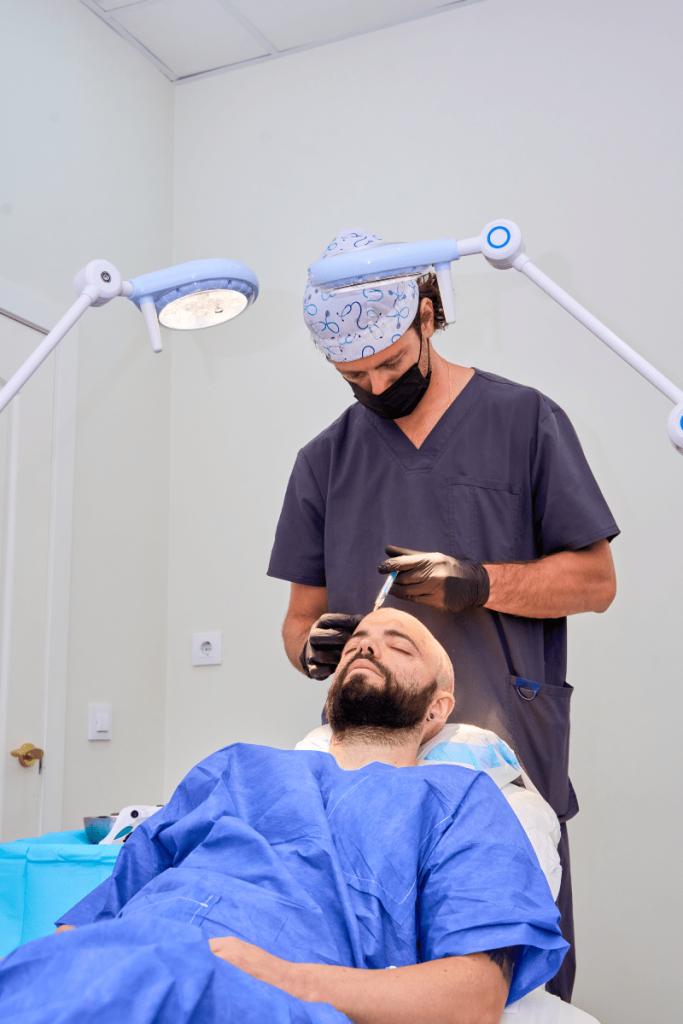
What Techniques Are Used In Revision Transplants?
In revision transplants, different techniques can be combined depending on the error of the initial operation. The most commonly used method is still FUE, but limited donor grafts are used carefully this time. Graft extraction (re-harvesting) may be performed to thin or remove a faulty hairline. Furthermore, methods like Scalp Micropigmentation (SMP) or FUE graft implantation (camouflage) into scars can be preferred to cover large scars in the donor area. The techniques to be applied are planned entirely specific to the patient’s problem.
How Is A Faulty Hairline Corrected?
Correcting a faulty hairline is a combination of artistic and surgical skill. Two main approaches are followed to soften an artificial, straight, and thick hairline: First, a natural transition is achieved by implanting single, finer grafts in the frontal area where the thick grafts are located. Second, some of the grafts in a line positioned too far forward or too low are extracted using the FUE method (harvesting). These extracted grafts are then re-implanted in a natural line or used in another area to correct the aesthetic of the hairline.
How Is Sparseness In The Donor Area Rectified?
Sparseness or the “over-harvested” appearance in the donor area is one of the most challenging aspects of revision surgeries. Two main strategies are applied to remedy this issue. The first is a camouflage technique where a limited number of grafts from the remaining capacity of the area are transplanted more evenly and sparsely behind the existing hair. The second, and more common approach, is applying Scalp Micropigmentation (SMP) to the sparse area. SMP creates an optical density illusion and hides scars by injecting colour as small dots into the scalp using tattoo pigments.
What Is Scalp Micropigmentation (SMP) And How Does It Help?
Scalp Micro-Pigmentation (SMP) is a cosmetic procedure where special pigments are applied with micro-needles to the scalp to camouflage hair loss or surgical scars. In cases of failed hair transplants, SMP is used specifically to hide FUE scars in the donor area or FUT strip scars. It also improves the overall hair appearance by creating an illusion of density in the transplanted area. It is different from permanent tattooing, but periodic touch-ups may be necessary to maintain its appearance.
How Is The Required Number Of Grafts For The Revision Procedure Determined?
The number of grafts required for the revision procedure primarily depends on the extent of the damage caused by the initial operation and the patient’s remaining donor capacity. If the problem is only an unnatural hairline, fewer grafts may suffice. However, if there is low density over a large area or donor damage, the existing donor grafts are counted very carefully, and planning may include harvesting additional grafts from body hair like the beard or chest if necessary. In all cases, the graft reserve must be used extremely efficiently to preserve a natural appearance.
What Should Be Done To Prevent A Second Failure?
The key to preventing a second failure is learning from the mistakes made the first time. This starts primarily with selecting the best revision specialist; finding a team that specializes in revision hair transplants and has proven experience in this field is critical. Furthermore, unrealistic expectations should be avoided, the condition of the donor area must be honestly evaluated, and all details of the contract (survival guarantee, revision conditions) should be carefully examined. Priority should be given to proven quality and experience instead of low prices.
In Which Cases Cannot A Hair Transplant Revision Be Performed?
Unfortunately, hair transplant revision may not be possible or may be very limited in some situations. The most significant obstacle is the patient not having a sufficient graft reserve left in the donor area. Over-harvesting the donor area in the initial operation can lead to insufficient healthy grafts remaining for a second transplant. Additionally, if excessively thickened scar tissue has formed in the recipient area, the chance of new grafts taking root can drop dramatically. In such cases, resorting to non-surgical solutions like SMP or hair systems is a more appropriate approach.
How Much Does The Revision Procedure Cost?
The cost of a revision procedure can often be higher than the initial hair transplant. This is because revision operations require more time, expertise, precision, and artistic skill. Since the surgeon must both rectify the initial error and utilize limited donor resources efficiently, pricing is often based on the difficulty of the procedure rather than just the number of grafts. Investigating international centres with experience in these complex procedures that offer good value for money, especially in Turkey, can provide a cost advantage.
How Are Cysts Formed After Hair Transplantation Treated?
Small, inflamed or non-inflamed cysts (epidermal cysts) can form on the scalp after a hair transplant. This condition is associated with a hair follicle being buried too deep beneath the skin during the transplant or the capillary channel not being opened correctly. Cysts are usually harmless and may disappear on their own. However, a dermatologist or surgeon should be consulted for cysts that become large, painful, or inflamed. Treatment may sometimes require minor surgical drainage or the use of antibiotics.
What Is The Success Rate In Revision Transplants?
The success rate in revision transplants may be slightly lower than general transplants, depending on the nature of the initial operation and the extent of the damage. However, when working with an experienced surgeon and team specialized in revision, the success rate is quite high. Success is generally measured by the ability to achieve a natural appearance, increase the desired density, and alleviate the patient’s aesthetic concerns. A successful revision will significantly enhance the patient’s quality of life and be worth the final result.
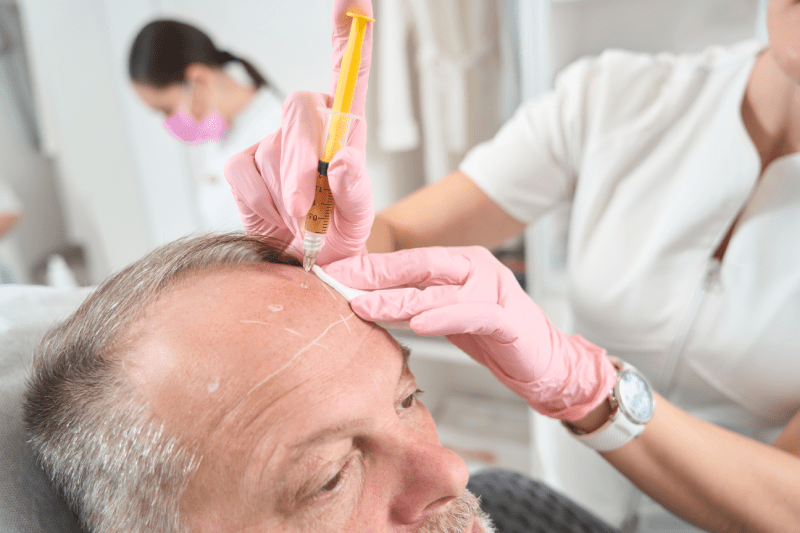
Why Is Turkey Recommended For The Revision Procedure?
Turkey is frequently recommended for the revision procedure, particularly due to its expertise and experience in health tourism. Many centers in Turkey have world-renowned expertise in both high-volume operations and challenging revision cases. Furthermore, they offer high-quality service at much more affordable prices compared to the high costs in the UK, often including package services (accommodation, transfers). This combination ensures that patients can have a second chance without compromising on quality.
How To Psychologically Manage A Failed Hair Transplant?
A failed hair transplant experience can cause serious psychological effects in the patient, such as disappointment, shame, and depression. In this process, seeking professional psychological support and accepting the situation is essential. Remember that this is an aesthetic problem, and a solution is available. Focusing on the revision process, setting realistic expectations, and finding support by sharing the situation with others will facilitate this management. Companies like Cure Holiday strive to provide not only medical but also moral support.
What Tests Should Be Done Before A Revision Transplant?
Before a revision transplant, comprehensive tests are performed to understand why the initial operation failed and to confirm the patient’s general health status. These include standard blood tests (Hepatitis B/C, HIV, clotting), detailed analysis of the scalp and donor area (density, elasticity, scar tissue detection), and sometimes allergy tests. It is also mandatory for the surgeon to see all medical records and photos of the initial operation for planning purposes.
Can I Have Scalp Micropigmentation (SMP) And Revision Transplant At The Same Time?
No, having Scalp Micropigmentation (SMP) and a revision hair transplant at the same time is not recommended. Hair transplantation is a surgical procedure that requires the scalp to heal. SMP is a tattooing procedure, and applying it to unhealed tissue increases the risk of infection and pigment inconsistency. If a transplant is to be performed, the final results (approximately 12 months) of the transplant should be awaited first. SMP should generally be applied as the final step to camouflage scars or areas where the desired density could not be reached after the transplant.
Can Faulty Transplanted Grafts Be Completely Removed?
It is possible to completely remove faulty transplanted grafts (those at the wrong angle, or in the wrong direction), but this procedure must be done carefully. The extracted grafts usually lose their viability for re-implantation in another area, so this procedure is mostly performed just to clean up grafts that disrupt naturalness. Small scars may form in the area during graft extraction, which may require secondary scar camouflage. This procedure is generally preferred to thin the hairline and soften the harsh, artificial line.
Is The Recovery Time Longer In Revision Transplants?
Yes, the recovery time for a revision transplant can be slightly longer and more challenging than the initial operation. This is because pre-existing scar tissue is present in the recipient and donor areas. Scar tissue can reduce blood flow and slow down the healing process. Furthermore, because the surgeon must work with greater precision, symptoms like swelling and redness can be more persistent than after the first operation. However, strictly following expert advice will help shorten this period.
Is More Than One Session Required To Correct A Failed Transplant?
Often, more than one revision session may be required to fix large-scale damage and complex aesthetic issues. Especially if there is donor area damage, low density over a large area, or a large number of misplaced grafts, correcting all of them in a single session both exceeds the donor area’s capacity and overloads the recipient area. Therefore, a two-stage plan, separated by at least 8-12 months to allow for healing and graft survival between sessions, yields more successful results.
How Are Bald Patches Formed After Hair Transplantation Covered?
Bald patches formed due to irregular graft survival or complete shedding in certain spots after a hair transplant are usually covered with a secondary revision transplant. Limited grafts are carefully transplanted into these areas using the FUE technique, taking into account the natural hair direction around the patches. Another option, if the graft reserve is very limited, is the application of Scalp Micropigmentation (SMP) to create an illusion of density over the bald patches. The specialist examines the size of the patch and the surrounding hair structure to determine the best solution.
How Is Incorrectly Transplanted Beard Or Body Hair Corrected?
Incorrectly transplanted beard or body hair (BHT) creates an aesthetic problem because it usually has a different texture and colour than the hair on the scalp. The correction of such grafts is typically done by individually extracting them using the FUE technique. This process is delicate and must be performed carefully to avoid damaging the surrounding tissue. If possible and available, finer and more suitable hair grafts from the scalp are implanted into the cleared area to try and achieve a more natural density and appearance.
Is Scalp Numbness After Hair Transplantation Permanent?
It is quite common to experience temporary numbness or lack of sensation in both the donor and recipient areas after a hair transplant. This condition is caused by the fine nerve endings under the skin being damaged during graft harvesting and implantation. This feeling of numbness usually slowly resolves over a few weeks or months as the nerves repair themselves. However, in very rare cases, there is also a risk of permanent numbness. The duration of this condition depends on the degree of nerve damage and the person’s healing rate.
How Can Insufficient Density Be Increased?
If insufficient density was achieved in the initial operation, this situation can generally be corrected with a secondary density transplant. This revision session is based on implanting additional grafts among the existing hair, without disrupting the natural direction and angle. Successful densification both provides a fuller look in the recipient area and increases visual density by reducing light reflection. However, the remaining capacity of the donor area and skin elasticity determine the feasibility of this additional densification procedure.
What Should I Pay Attention To During The Recovery Period After The Revision Procedure?
The recovery period after a revision procedure requires the same, or even more, careful attention than the initial transplant. All medications (antibiotics, painkillers) provided by the specialist must be taken regularly, and the first washing instructions must be strictly followed. During the first 10 days, it is essential to protect the recipient and donor areas from trauma and contact, avoid direct sun exposure, and strictly refrain from alcohol/smoking consumption. Sleeping with the head elevated is vital for controlling swelling and edema.
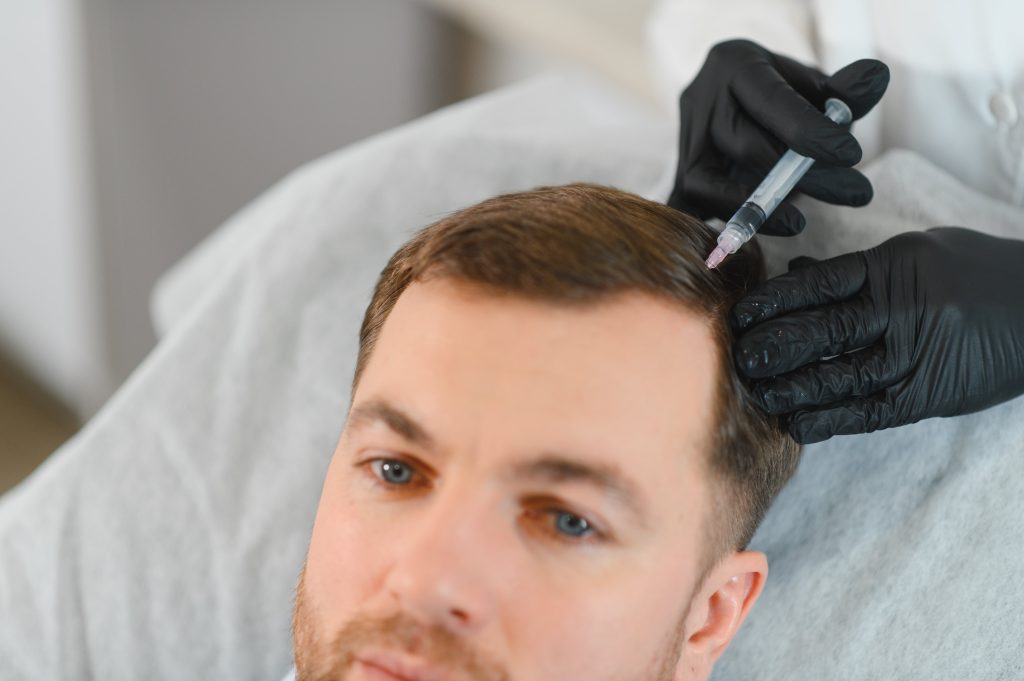
Why Should I Choose An Experienced Team For Revision?
Revision operations require a much higher level of experience, precision, and artistic perspective than initial transplants. An experienced team knows how to use the limited donor graft reserve most efficiently, maximize the chance of graft survival in the scarred recipient area, and most importantly, aesthetically correct the mistakes of the first operation (wrong angle, artificial line). Since revision is a second chance, choosing guaranteed and internationally recognized teams is a critical investment for a permanent and natural result.
How Can Cure Holiday Help Me In The Revision Process?
Finding the right revision specialist after a failed hair transplant can be exhausting and stressful. Cure Holiday is here to support you through this difficult process. We can recommend Turkish centers to you that are not only cost-effective but also specialized in revision hair transplantation and have proven success. We organize all travel, accommodation, and hospital processes, saving you time and stress. Our goal is to help you achieve the natural look you desire with a safe, high-quality, and economical revision operation.
This comprehensive guide aims to help you alleviate the anxieties associated with a failed hair transplant and accurately assess your situation.
Remember, most aesthetic or technical issues can be corrected by experienced specialists. To achieve the best results during this critical correction process and eliminate the risk of a second failure, it’s wise to seek out international centers specializing in corrective transplants.
At Cure Holiday, we’re ready to guide you in connecting with world-renowned centers in Türkiye specializing in complex revision surgeries and organizing the entire process. Contact Cure Holiday now to confidently achieve the natural look you’ve been dreaming of, taking advantage of the quality and cost advantages of health tourism.
